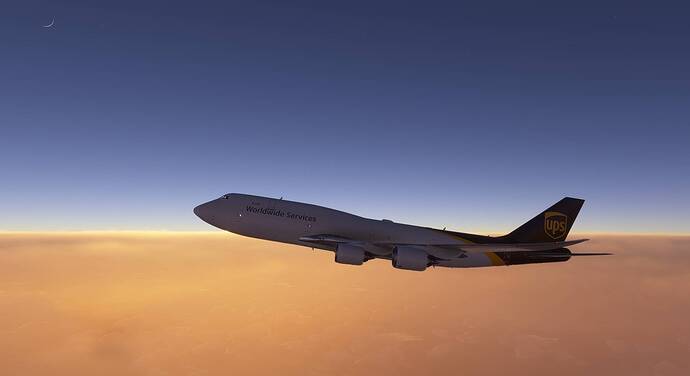I am using the salty simulation mod, but I get the same issue without it. The AoA of the 747 is WAY too high above FL250, am I doing something wrong?
Can’t be sure about the 747 without some data to back it up, but in real life if you’re too heavy when you reach cruise altitude ( too fast climb rate ) then the aircraft will fly with a higher AOA to balance the extra weight and you would have to descend some to find a more ‘efficient’ altitude.
Without knowing what your payload or CoG, or your flight plan is…I would say you are overweight for the altitude you are flying at.
The big heavies usually follow a “step-climb” profile on long haul flights. Usually, you start at FL300 for example, then increase altitude as you burn fuel off…FL330, FL350, etc…
Yeah I think it has to do with that also…
CG has a negligible effect on pitch attitude.
Not in MSFS - Asobo have made it a selectable / alterable item by the user, so if it isn’t set right upon loading an aircraft, it will have a huge effect on all of the aircraft’s flight characteristics.
Not IRL and not in the sim. Flight characteristics yes, pitch attitude no.
You can find further confirmation here:
https://www.skybrary.aero/index.php/AP4ATCO_-_Weight_and_Balance
The OP was talking about AOA.
To summarize the effects of load distribution:
** The CG position influences the lift and AOA of the wing, the amount and direction of force on the tail, and the degree of deflection of the stabilizer needed to supply the proper tail force for equilibrium. The latter is very important because of its relationship to elevator control force.*
Which is identical to pitch attitude in level flight. Again, the effect on pitch attitude/AoA is negligible.
Sorry, I’m confused here, obviously. If I’m flying along in my aircraft with a 1 ton payload nicely positioned with all other weight and balance for a balanced CoG, and while climbing that load breaks free and slips back 50 ft to the tail, there is sure as hell going to be an effect on pitch attitude and AoA because the CoG has changed.
Likewise, a user inadvertently setting CoG forward beyond design limits in MSFS is not going to get off the ground no matter how much elevator force or trim they apply. There are quite a few posts now about MSFS CoG settings affecting aircraft, with devs having to notify users to make sure they set CoG within limits. Most of us consider this a bit daft to include, as CoG at empty weight is set by aircraft design, not pilots, who instead make sure payload is balanced with reference to that CoG.
Maybe we’re at crossed purposes in terms of empty CoG and altered CoG when in flight.
CG shift is an entirely different scenario.
The most efficient way to fly is with an aftmost CG, since the tail needs to create less down force than with a foward CG.
But the required total lift to maintain altitude at a certain weight and speed stays basically the same, regardless of the CG.
Totally agree, this is where we’re at crossed purposes as it’s the current ability for the user to create CG shift in MSFS that is causing issues with flight characteristics. Ever since Asobo added it, folks’ aircraft, especially tail draggers, have been at times uncontrollable / unflyable. I think the other posters were referring to that with regards to the 747’s unusual cruise attitude and AoA, rather than the classic empty-weight CG.
There’s a fix coming for the CG that allows devs to over-ride it using a line in the flightmodel.cfg file. In the case of the OP, I think excess climb rate and possibility AU weight are his most likely causes.
I thought so to, so I reduced my payload and fuel, but I was still at this AoA, no idea what is going on.
I will check today using 0 payload and very little fuel and see how it flies, this has been an ongoing issue I have with the 747 and I can’t find why it does this D:
Stagger your climb also. I would recommend 50% fuel balanced evenly in all tanks, and then climb gradually toward cruise height. Users had the same issues with concorde when they flew it in FSX and Prepar3D - they couldn’t reach Mach 2 or cruise altitude and thought that there was something wrong with the airplane. But at max take off weight etc, most aircraft have quite specified climb patterns to achieve their optimum cruise Mach and altitude - it might just turn out to be a timing thing.

